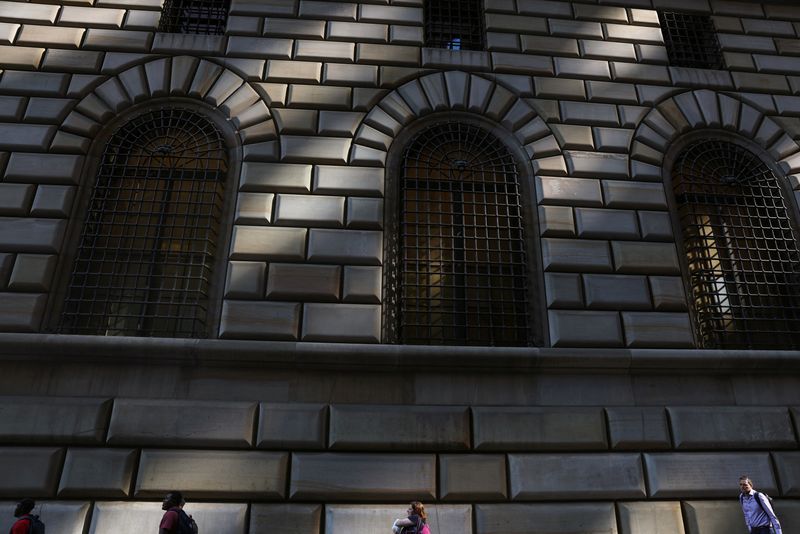By Michael S. Derby
NEW YORK (Reuters) -The U.S. Federal Reserve has about a year left to run on its efforts to shrink its still massive stock of cash and securities, according to a survey of large banks released by the Federal Reserve Bank of New York Thursday.
The bank's Survey of Primary Dealers serves as counterparties to central bank market interventions and underwrite Treasury debt auctions. It found respondents predicting that the drawdown, often referred to as quantitative tightening, or QT, will be done in the third quarter of next year. The drawdown will halt when Fed holdings, now at about $8 trillion, fall to $6.750 trillion.
The dealers were surveyed ahead of the Sept. 19-20 Federal Open Market Committee (FOMC) meeting. At that gathering officials kept their interest rate target range steady at between 5.25% and 5.5%, while keeping alive the prospect of one more hike this year, with rates staying higher for longer relative to what officials expected at the June FOMC meeting.
Dealers’ projections for the balance sheet outlook come as the Fed since last year has been allowing just shy of $100 billion per month in Treasury and mortgage bonds to mature and not be replaced. The Fed is contracting its holdings to complement its rate rise campaign, and to date, it’s shed about $1 trillion as it seeks to withdraw liquidity from the financial system to bring inflation back to the 2% target.
But even as the rate rise campaign nears its end, there's little certainty as to when the balance sheet drawdown can stop. Fed officials have said they expect to allow the process to go for some time and that it will end just before liquidity in the financial system gets tight enough to complicate the Fed's control over its short-term rate target.
On Tuesday, Roberto Perli, who leads the implementation of monetary policy for the New York Fed, said the central bank is targeting what it deems an "ample" amount of bank reserves, noting “we know that the transition from abundant to ample will occur at some point, but we don’t know when. For now, that moment does not seem to be on the horizon."
Some economists and strategists have ball parked financial sector liquidity as a combination of bank reserves and inflows of cash into the Fed's reverse repo facility.
In the survey, respondents told the New York Fed ahead of FOMC meeting they see reserves falling to $2.625 trillion at the time when the balance sheet stops contracting, versus the current level of around $3.2 trillion. Reverse repo take up is seen ebbing to $1.125 trillion, versus Thursday's $1.157 trillion, which is itself down from the $2.6 trillion peak hit at the end of 2022.

Against the survey's findings, a number of market participants believe reverse repo takeup could fall back toward very small numbers, much lower than what poll participants had reckoned last month.
Survey respondents offered differing views on what would trigger an end to the balance sheet drawdown. Some said the onset of recession would cause it, while others said "they expected or saw potential for the end of balance sheet reduction to be determined by reserve scarcity, assessments of reserves as a percentage of GDP, and/or potential upward pressures on money market rates."